Fichas de peces marinos y de arrecife (página 2)
La página 2 de la lista de especies en la categoría peces marinos y de arrecife contiene 60 fichas de 692 en total. Hay 11 géneros diferentes desde Amblyeleotris hasta Apolemichthys.
Lista des fichas de Amblyeleotris guttata a Apolemichthys trimaculatus
- Amblyeleotris guttata

8,0 → 11,0 cm (> 120 L)
pH 8,0–8,5 | GH | 23–28°C - Amblyeleotris harrisorum

7,0 → 10,0 cm (> 120 L)
pH 8,0–8,5 | GH | 23–28°C - Amblyeleotris latifasciata

11,0 → 13,0 cm (> 200 L)
pH 8,0–8,5 | GH | 23–28°C - Amblyeleotris randalli

10,0 → 12,0 cm (> 120 L)
pH 8,0–8,5 | GH | 23–28°C - Amblyeleotris wheeleri

5,0 → 6,5 cm (> 50 L)
pH 8,0–8,5 | GH | 23–28°C - Amblyeleotris yanoi

6,0 → 12,0 cm (> 120 L)
pH 8,0–8,5 | GH | 23–28°C
- Amblygobius albimaculatus

12,0 → 18,0 cm (> 200 L)
pH 8,0–8,5 | GH | 23–28°C - Amblygobius bynoensis

8,0 → 10,0 cm (> 200 L)
pH 8,0–8,5 | GH | 23–28°C - Amblygobius decussatus

6,0 → 9,0 cm (> 200 L)
pH 8,0–8,5 | GH | 23–28°C - Amblygobius phalaena

12,0 → 15,0 cm (> 450 L)
pH 8,0–8,5 | GH | 23–28°C - Amphichaetodon howensis

15,0 → 18,0 cm (> 450 L)
pH 8,0–8,5 | GH | 20–25°C - Amphiprion akallopisos

9,0 → 11,0 cm (> 120 L)
pH 8,0–8,5 | GH | 23–28°C - Amphiprion akindynos

7,0 → 11,0 cm (> 80 L)
pH 8,0–8,5 | GH | 23–28°C - Amphiprion allardi
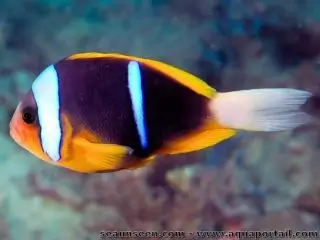
10,0 → 15,0 cm (> 300 L)
pH 8,0–8,5 | GH | 23–28°C - Amphiprion barberi

7,0 → 9,0 cm (> 120 L)
pH 8,0–8,5 | GH | 23–28°C - Amphiprion biaculeatus

9,0 → 18,0 cm (> 300 L)
pH 8,0–8,5 | GH | 23–28°C - Amphiprion bicinctus

11,0 → 14,0 cm (> 120 L)
pH 8,0–8,5 | GH | 23–28°C - Amphiprion chagosensis

9,0 → 11,0 cm (> 120 L)
pH 8,0–8,5 | GH | 23–28°C - Amphiprion chrysogaster
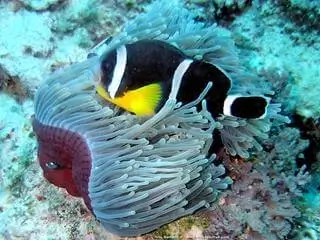
10,0 → 14,0 cm (> 200 L)
pH 8,0–8,5 | GH | 23–28°C - Amphiprion chrysopterus
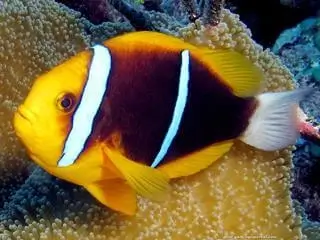
12,0 → 15,0 cm (> 300 L)
pH 8,0–8,5 | GH | 23–28°C - Amphiprion clarkii

9,0 → 13,0 cm (> 200 L)
pH 8,0–8,5 | GH | 23–28°C - Amphiprion ephippium
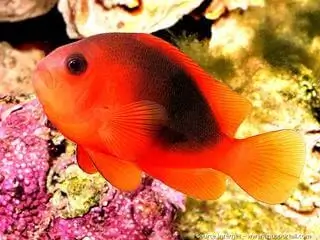
10,0 → 14,0 cm (> 120 L)
pH 8,0–8,5 | GH | 23–28°C - Amphiprion frenatus

10,0 → 14,0 cm (> 120 L)
pH 8,0–8,5 | GH | 23–28°C - Amphiprion fuscocaudatus

12,0 → 15,0 cm (> 200 L)
pH 8,0–8,5 | GH | 23–28°C
- Amphiprion latezonatus

10,0 → 14,0 cm (> 120 L)
pH 8,0–8,5 | GH | 23–28°C - Amphiprion latifasciatus

12,0 → 14,0 cm (> 200 L)
pH 8,0–8,5 | GH | 23–28°C - Amphiprion leucokranos
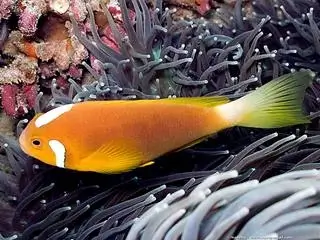
7,0 → 9,0 cm (> 80 L)
pH 8,0–8,5 | GH | 23–28°C - Amphiprion mccullochi
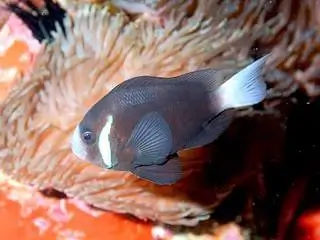
9,0 → 12,0 cm (> 200 L)
pH 8,0–8,5 | GH | 23–28°C - Amphiprion melanopus

8,0 → 12,0 cm (> 120 L)
pH 8,0–8,5 | GH | 23–28°C - Amphiprion nigripes

8,0 → 11,0 cm (> 200 L)
pH 8,0–8,5 | GH | 23–28°C - Amphiprion ocellaris

9,0 → 11,0 cm (> 120 L)
pH 8,0–8,5 | GH | 23–28°C - Amphiprion omanensis

11,0 → 14,0 cm (> 200 L)
pH 8,0–8,5 | GH | 23–28°C - Amphiprion pacificus

4,5 → 7,0 cm (> 200 L)
pH 8,0–8,5 | GH | 23–28°C - Amphiprion percula

8,0 → 11,0 cm (> 80 L)
pH 8,0–8,5 | GH | 23–28°C - Amphiprion perideraion

7,0 → 10,0 cm (> 120 L)
pH 8,0–8,5 | GH | 23–28°C - Amphiprion polymnus

9,0 → 13,0 cm (> 200 L)
pH 8,0–8,5 | GH | 23–28°C - Amphiprion rubrocinctus

12,0 → 14,0 cm (> 200 L)
pH 8,0–8,5 | GH | 23–28°C - Amphiprion sandaracinos

10,0 → 15,0 cm (> 200 L)
pH 8,0–8,5 | GH | 23–28°C - Amphiprion sebae

12,0 → 16,0 cm (> 300 L)
pH 8,0–8,5 | GH | 23–28°C - Amphiprion thiellei
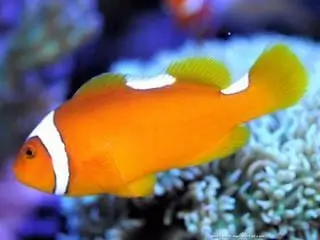
6,5 → 8,0 cm (> 120 L)
pH 8,0–8,5 | GH | 23–28°C - Amphiprion tricinctus

9,0 → 12,0 cm (> 120 L)
pH 8,0–8,5 | GH | 23–28°C - Anampses chrysocephalus

16,0 → 18,0 cm (> 450 L)
pH 8,0–8,5 | GH | 23–28°C - Anampses femininus

18,0 → 24,0 cm (> 450 L)
pH 8,0–8,5 | GH | 23–28°C - Anampses twistii
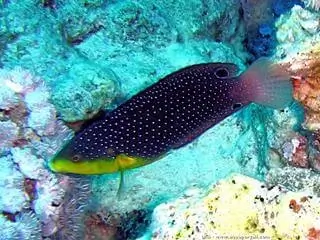
15,0 → 18,0 cm (> 450 L)
pH 8,0–8,5 | GH | 23–28°C - Anguilla anguilla

40,0 → 130,0 cm (> 6000 L)
pH 8,0–8,5 | GH | 4–20°C - Anguilla rostrata

37,0 → 152,0 cm (> 6000 L)
pH 8,0–8,5 | GH | 4–25°C - Anoplocapros lenticularis
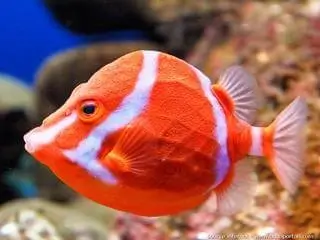
25,0 → 33,0 cm (> 800 L)
pH 8,0–8,5 | GH | 23–28°C - Anyperodon leucogrammicus
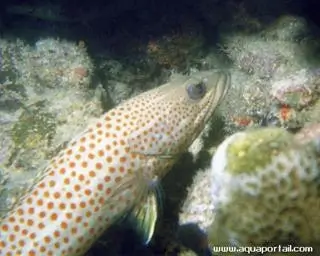
38,0 → 42,0 cm (> 1500 L)
pH 8,0–8,5 | GH | 23–28°C - Apistus carinatus
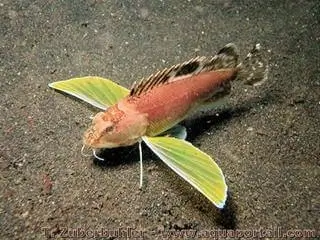
10,0 → 20,0 cm (> 450 L)
pH 8,0–8,5 | GH | 23–28°C - Apogon apogonides
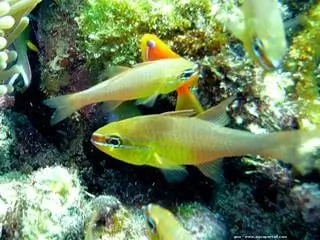
9,0 → 11,0 cm (> 200 L)
pH | GH | 23–28°C - Apogon aureus

12,0 → 14,0 cm (> L)
pH | GH | 23–28°C - Apogon cyanosoma

6,0 → 8,0 cm (> L)
pH | GH | 23–28°C - Apogon kallopterus
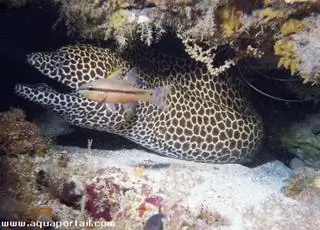
11,0 → 15,0 cm (> 300 L)
pH | GH | 23–28°C - Apogon sealei
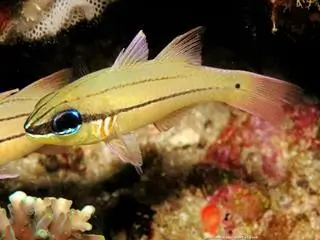
9,0 → 11,0 cm (> L)
pH | GH | 23–28°C - Apolemichthys arcuatus

15,0 → 18,0 cm (> L)
pH | GH | 23–28°C - Apolemichthys armitagei
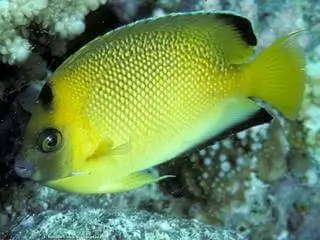
18,0 → 22,0 cm (> 450 L)
pH 8,0–8,5 | GH | 23–28°C - Apolemichthys griffisi

22,0 → 30,0 cm (> 800 L)
pH 8,0–8,5 | GH | 23–28°C - Apolemichthys guezei

12,0 → 15,0 cm (> L)
pH | GH | 23–28°C - Apolemichthys kingi

16,0 → 21,0 cm (> L)
pH | GH | 23–28°C - Apolemichthys trimaculatus

20,0 → 25,0 cm (> L)
pH | GH | 23–28°C
Los datos biológicos de las especies indican el tamaño en cm y, si los valores son relevantes, otras características específicas.
